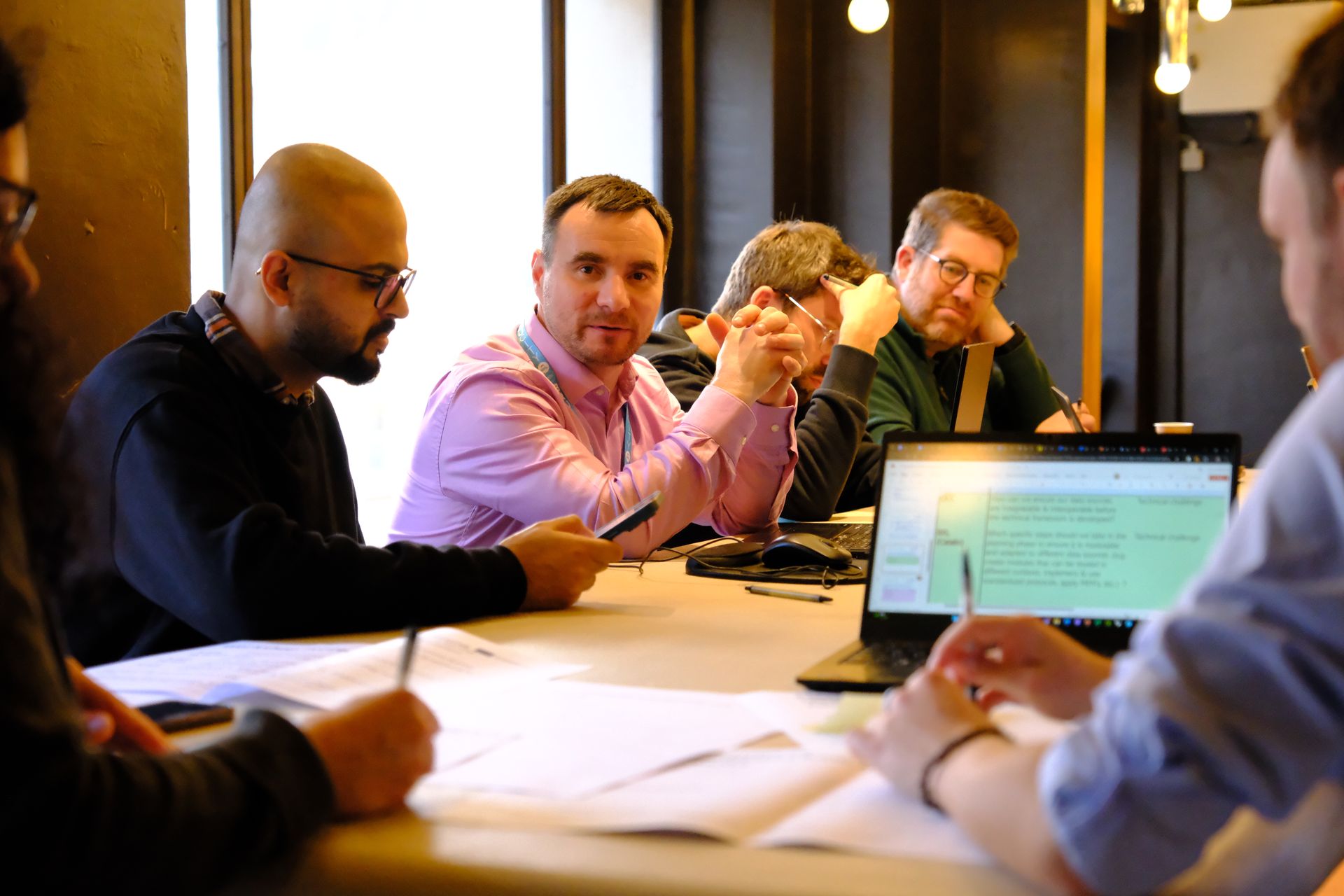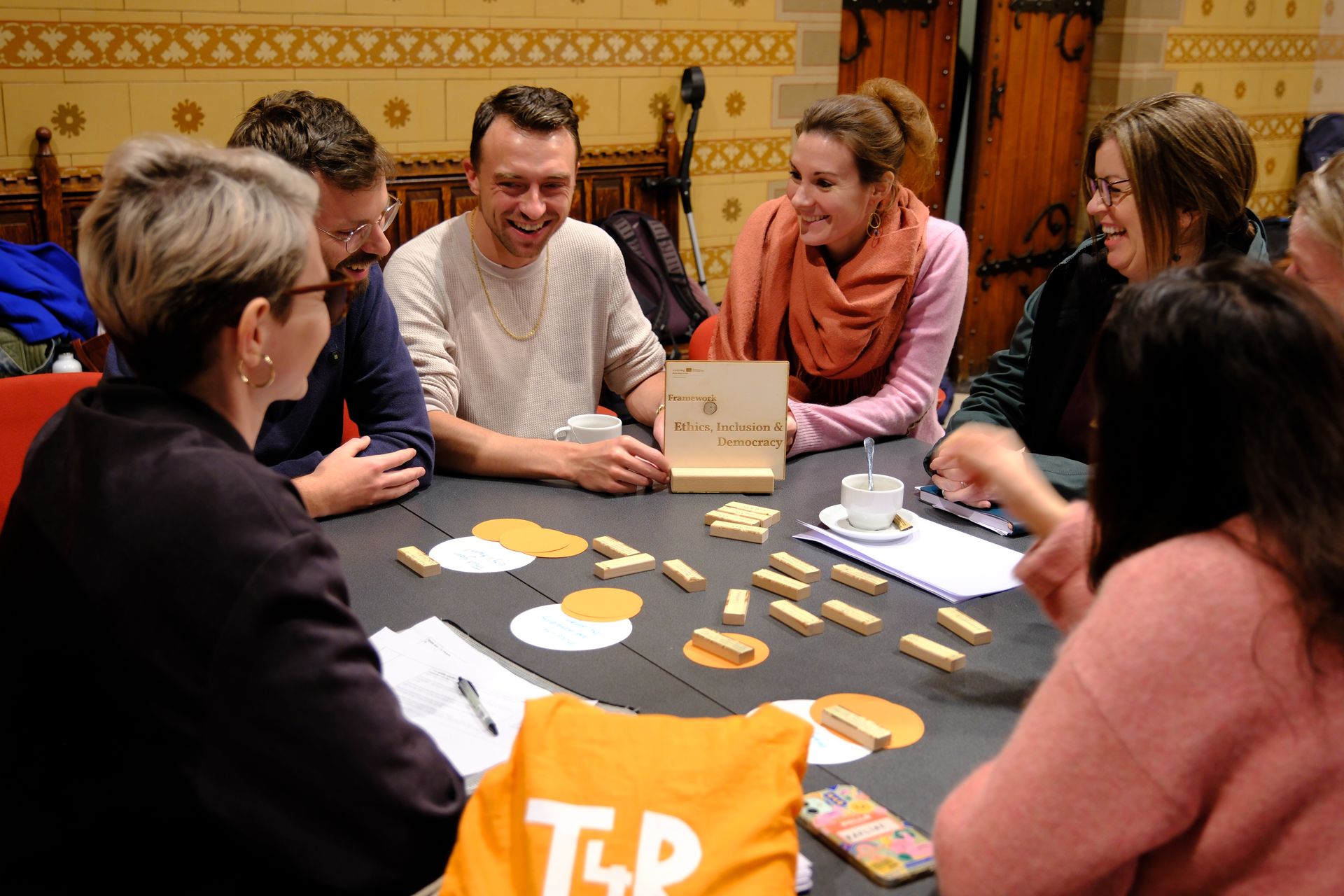One of the main goals of the Twin4Resilience (T4R) project is to close the gap between cities already using Local Digital Twins (LDTs), those considering them, and those unaware of their potential. It is therefore essential for the participating pilot cities and regions to coordinate their actions and share their experiences and knowledge while setting up their LDTs. For this reason, each of the pilot cities will write an individual Pilot Action Plan (PAP), in which they will give a detailed report on their plans, considerations and decisions for setting up their LDT.
Not yet at the Pilot Action Planning stage, but already discussing and sharing experiences: Participants fromt the 8 pilot cities and regions at the T4R consortium meeting in Brussels in 2024.
To make sure that the individual plans follow a consistent structure and the pilot cities and regions do not skip any important steps on the way of setting up their LDT, the consortium provides a generic Pilot Action Plan, which serves as a guide for the pilot cities and regions to draft their individual plans. The plan highlights the importance of considering various questions regarding Technical Design, Governance, Ethics, Inclusion and Democratization, and Train-the-Trainer as well as more general tasks, such as project management, defining milestones, use cases, goals and Key Performance Indicators (KPIs), and addressing challenges and stakeholders. The respective eight piloting cities and regions will use the generic PAP as a basis for defining the addressed points for their individual cases. Their individual PAP will then be the foundation for setting up or further developing their LDT in the coming years.
The PAP consists of three main sections. The first section is dedicated to the overall objectives, identification of use cases, risks, opportunities and vision of the pilot. These aspects should be addressed as fundamentals for setting up an LDT.
The second main section addresses the four frameworks (Technical Design, Governance, Ethics, Inclusion and Democratization, and Train-the-Trainer), which were created by the consortium to illustrate issues regarding the setup of an LDT from four different angles. The participating eight cities and regions will use the questions raised in these frameworks and try to provide answers for their specific cases.
Participants discussing the „Ethics, Inclusion and Democracy“ Framework at a T4R workshop in Brussels in 2024. The PAP operationalizes the frameworks through clusters of questions.
For each framework they will have to answer questions grouped together in clusters. One example would be the cluster of Interoperability & Reusability, which is part of the framework Technical Design. It addresses questions regarding the underlying technical framework - answering these questions will help the cities to think ahead of other potentially suitable technical components or the reusability of the LDT for other stakeholders. Answering the questions based on the different frameworks which are posed in the clusters will help the cities and regions to understand the needs, goals, and objectives of their individual LDTs.
The third main section of the PAP mainly focuses on project management, milestones, potential funding programs, budget, and resources. It provides specific templates and canvases as supporting guidelines and will help the cities and regions to make specific timeboxed plans for their individual LDTs. It furthermore helps to identify strengths, weaknesses, threats, and opportunities beforehand and will mitigate risks and failures from the beginning. These guidelines and templates support the cities with the project management of the complex, multifaceted project involving many different stakeholder that is setting up a LDT.
In the long term, the generic PAP is supposed to be used by follower cities across Europe to support them in navigating through their own process of setting up a LDT. With the T4R project really aiming at not only supporting the pilot cities in setting up resilient, wholistically set up twins which will be used long-term, but also at creating a blueprint for more cities to use, the PAP serves as an important cornerstone. In the future it will support cities outside the original T4R project to execute their plans for valuable and impactful LDTs by providing guideline for conceptualisation as well as project management. The eight participating pilot cities and regions serve as kind of test cases, where the applicability and usage of the generic PAP can be tested. These outcomes will also help the last work package titled “Resilient people”, which aims to create learning modules and trainings that suit the follower cities and include the findings and successes of the Pilot Action Plan.
Text and edit: Ricarda Becher & Jonas Merbeth, DKSR; Hester Wolrich, City of Utrecht

